SSL 4000 G+
“Break out of the box”
SSL Studio in Oxford
The ‘Legendary‘ SSL 4000 G+
16 channels of E series from Peter Gabriel’s Real World Studios
16 channels of G series from George Martin’s Air Studios
G+ Stereo Bus Compressor
Fully restored by Kieth Skerret at Recycled Audio
Also our locally available ex-SSL service engineer
Centered around the legendary SSL 4000 G+ console (‘the console that transformed the music recording industry’), our flexible hybrid setup is designed to meet all the needs of any client, whether simply patching in through a laptop, connecting remotely online, using our amazing outboard while staying in-the-box or, just pure old-school running the mix off analogue tape.
‘REAL WORLD’ stamped custom PCB
Solid State Logic state that the 4000 has been the mixer behind more platinum selling albums than all other consoles combined except the MCI series of consoles that did most of the classic hits in the 70's and 80's. Notable mixing engineers using the 4000 are Bob Clearmountain, Chris Lord-Alge, Tom Lord-Alge, Andy Wallace, Mark "Spike" Stent, Will Schillinger and Alan Moulder.
“The 4000 series is responsible for "mixed more number one records that any other console that's ever been built or probably ever will be built"
Back in the 80s and 90s, there was endless debate about whether the E channels or G channels sounded better, to the extent where some studios commissioned SSL consoles with an even split of E-EQ and G-EQ channel modules, just the one we have here at Abbey Recording.
Many leading engineers use the E-Channel’s equalisation for detailed problem-solving, and the G-Channel to shape and give character to the sound. Legendary 5 time grammy award-winning mix engineer Chris Lord-Alge (Muse, Green Day, Bruce Springsteen) is firmly in that camp:
“The E-Channel is my constant mix companion, It gives me the vintage EQ curve, with the saturation that makes it so musical” - CLA
Yet, he adds, “for me, the G-Channel stands for Grit, Grind and Gain. The G-Channel ups the ante on SSL aggression, making it the turbo-powered channel strip for hard corners and sharp boost.”
Mark Tucker with the SSL 4000 series console (photograph: Jolyon Holroyd)
Grammy-winning mixing engineer Tony Maserati (Beyoncé, Jay Z, David Bowie, Weezer) tends to think about the appropriateness of the E vs. the G in terms of genre: “The E-Channel has a bit more roundness, which is what I’m looking for with pop, R&B and hip-hop. The G, on the other hand, have more mid-range, which is great for rock’n’roll energy.”
And producer/engineer Mark “Spike” Stent (Ed Sheeran, Radiohead, Madonna, U2) takes a different approach to working with the E and the G, often combining the two in the same mix. On drums, he says, “I usually have a combination of the G-Channel and the E-Channel, depending on what part of the kit I’m mixing: I like the G-Channel on my overheads and hi-hats to give them top-end crispiness, and the E-Channel on the kick and snare.”
The Legendary G+ Series Bus Compressor
The SSL G+ Series Bus Compressor is based around a smart, simple layout: fixed Attack and Release controls with an Auto Release that incorporates a program dependent response; three fixed ratio settings, including 10:1, 4:1 and 2:1; along with Continuous Threshold Control and Make-Up Gain. Whether it’s exploited across the entire master bus, or used to tame peaks or add extra thwack to individual input channels, the G+ Series Bus Compressor provides that elusive audio “glue” that the SSL compressor is famous for.
In the end, engineers may argue about what makes the SSL tracking and mixing experience so distinctive, so driving, and so desirable. Some will argue that the 4000 series’ all-discrete design and Class A VCA chip are the key elements to its appeal, while others will point to its awesome summing architecture and flexible routing options. Others see it as the essential mixing board, the only logical choice for a first-class mixdown.
ARC offers a broad spectrum of competitively rated mixing services.
Call 01865 884464 for details.

